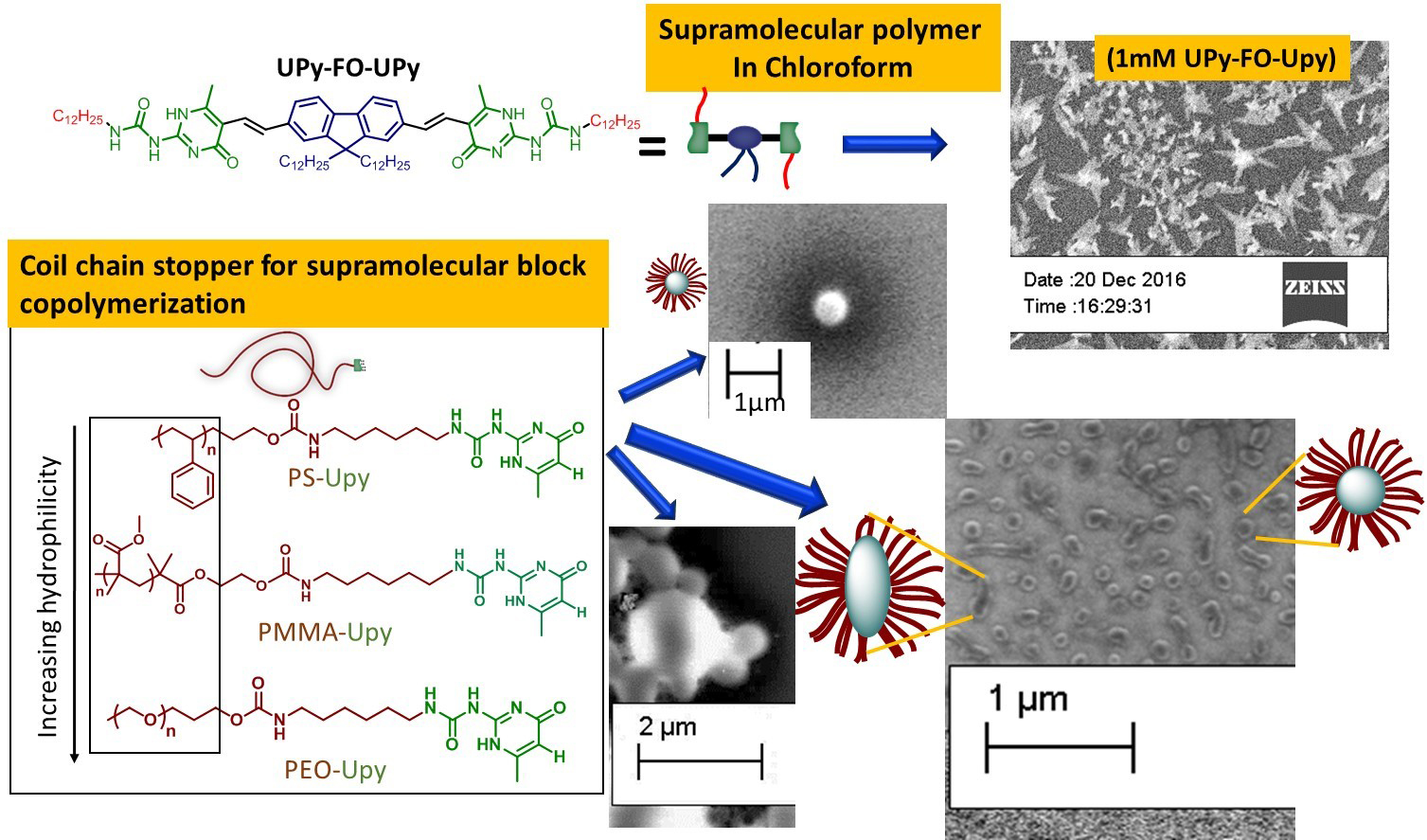Reports: ND756721-ND7: Supramolecular Polymerization Approach to the Synthesis and Dynamic Self-Assembly and Disassembly of Rod-Coil Block Copolymers
Padma Gopalan, University of Wisconsin, Madison
This proposal explores a new pathway to synthesizing conjugate-coil block copolymers using supramolecular polymerization for the conjugated block. Supramolecular polymerization is a powerful tool to build in a dynamic and reversible assembly/disassembly function into hierarchically assembled structures. This proposal is based on using a monodispered coil block synthesized by anionic polymerization and end functionalized with quadrauple hydrogen bonding units to grow a conjugated block by supramolecular polymerization of a difunctional monomer. However, very little is known about methods to control the dispersity of the chains which are inherently polydispersed, methods to characterize the molecular weights and dispersity, and if the confinement between the coil blocks affects the dynamics of supramolecular polymerization. We propose the synthesis of these conjugated-coil block copolymers and the study of their dynamic assembly/disassembly using dynamic light scattering, diffusion coefficient measurements and their morphology by Transmission Electron Microscopy, and X-ray scattering. By exploiting the temperature and concentration effects we propose to study the “self-correction” of chain lengths due to dynamic assembly/disassembly process induced by confinement of a monodispersed coil blocks. We have made significant progress towards the two goals in the proposal namely:
1) Synthesis of the conjugated-coil diblocks and triblocks using supramolecular polymerization of fluorene oligomers as the conjugated block.
2) Characterization of the molecular weight, dispersity and the supramolecular polymerization behavior of the conjugated block through a combination of studies.
Our main achievements in the last year towards these goals are:
· The conjugated block was successfully synthesized from well-defined H-bonding precursors by supramolecular polymerization (UPy-FO-UPy).
· Synthesized three different types of coil blocks terminated with H-bonding 2-ureido-4-pyrimidone (UPy) unit (Coil-UPy). This was achieved by synthesizing anionically the coil blocks followed by chain end functionalization (Figure 1).
· Initial morphological characterization of the self-assembly behavior of UPy-FO-UPy by Scanning electron microscopy (SEM) and dynamic light scattering (DLS) revealed well-defined crystallites due to pi stacking and H-bonding.
· Mixtures of various Coil-UPy chain stoppers with the UPy-FO-UPy macromonomer showed a rage of very interesting morphologies from spheres to ellipsoidal objects (Figure 1).
· Surprisingly in most mixtures only two major populations of self-assembled structures were found.
· Further characterization is ongoing to understand this unique self-assembly behavior.
· Following further characterization we plan on submitting a publication by late this year.
These results are the very first example of a block copolymer formed via supramolecular polymerization and their successful assembly in solution. The dynamic nature of this assembly is very exciting and will be the subject of the next years study.
Figure 1: The left panel shows the structure of the H-bonding rod unit and the coil blocks end functionalized with UPy synthesized so far. The right panel shows the resulting morphologies ranging from crystals, to cylindrical to spherical micelles from the pure rod units to its mixture with the coil blocks.












